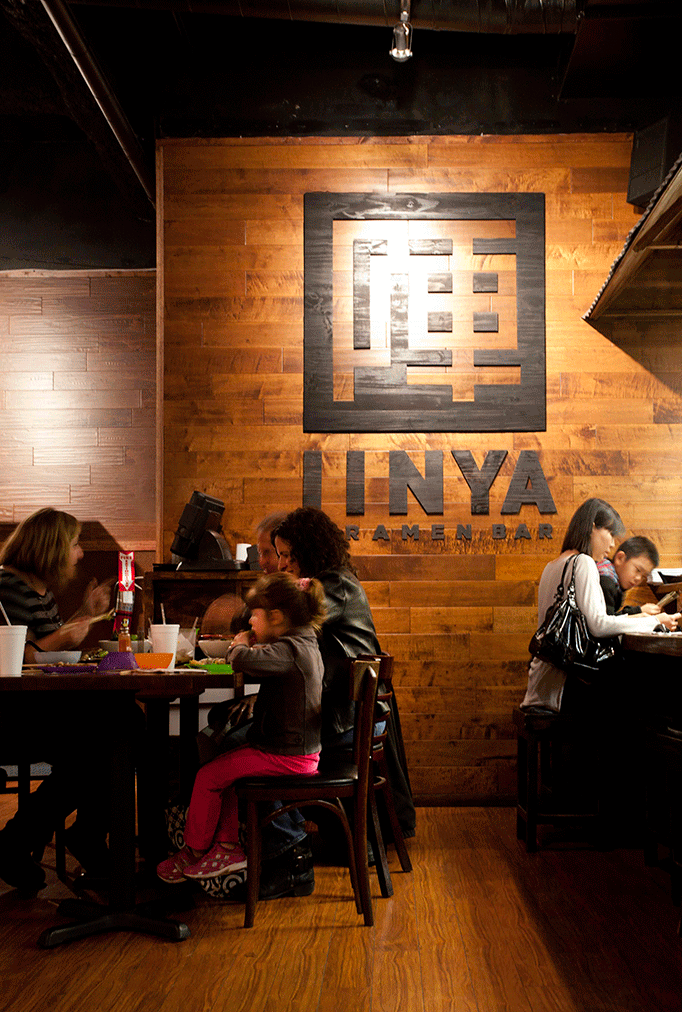
Authentic Japanese cuisine has only one true place of origin, of course. But the experience should be exported everywhere throughout the world. This, -apparently, is Tomonori Takahashi’s vision, and he seems to be off to a great start. From a humble, single-restaurant operation in Tokyo in 2000, his company comprises eight concepts today, promoting nearly 20 company-owned and franchised restaurants. At present, Takahashi’s La Brea Dining Co., of which he is founder and president, and which is dually based in Los Angeles and Tokyo, operates in Japan, Indonesia, Canada and the U.S.
Now the company is poised for a wave of growth concentrated largely in the U.S. as it goes forward with franchise sales for the Jinya Ramen Bar concept. The first of these opened in the Studio City neighborhood of Los Angeles in 2010. Just now there are nearly a dozen corporately owned or franchised Jinya Ramen Bar restaurants in North America, including Seattle and Las -Vegas, as well as -Vancouver, British Columbia. The company is looking to have 25 by the end of 2016, with an added goal of 100 by the end of 2020. “After we secure the Northern America region, we’d like to expand in Europe and the other Southeast Asia regions,” said Takahashi.
The restaurant’s ramen is a far cry from those packets of microwavable noodles that have long been a staple for college students — about as far as the distance between a very cheap hamburger and a top-quality piece of filet mignon, says Greg Ferrante, a senior vice president at JLL. “Tomo is dedicated to a high-quality concept, and that is exactly what they put out,” he said. (JLL has been working as La Brea Dining’s exclusive site-selection firm in the U.S. since May.)
Takahashi made a point of creating a menu that offers traditional Japanese flavors while still leaving room for individual preferences. A diner may choose a soup base from among Japanese pork broth, chicken or vegetables. There are varying levels of spiciness, and one may choose from about two dozen toppings.
Takahashi credits his father with teaching him important lessons about cuisine and the restaurant business in general. The elder Takahashi started a restaurant in Japan’s Ehime Prefecture some 50 years ago. The younger Takahashi grew up within the business and worked as a cook for six years, the first three with his father and the latter three at another restaurant in Tokyo. He also became general manager of a top Tokyo restaurant.
Jinya Ramen Bar is named for the 17th-century small castles in Japan called jin’ya, the owners of which were Samurai who oversaw small territories and were very engaged in their local communities. Takahashi chose this name to reflect that same sort of intimacy in relation to the customers; Jinya Ramen Bar units typically measure between 2,000 and 3,000 square feet and seat roughly 100 diners inside, with additional patio seating available outside wherever possible. The look and feel is upscale and uses natural wood and accent lighting. The price points are affordable, Ferrante says. “You can have the best-quality bowl of ramen that you will ever have for about $10,” he said. Jinya Ramen Bar units will work almost anywhere, Ferrante asserts, but sites that generate good traffic for the lunch and dinner crowd are preferred.
Takahashi’s strategy is to target major metro areas first. A Jinya Ramen Bar is set for later this month or early next at the Edens-owned Mosaic District retail center, in Fairfax, Va., near Washington. The company is at work on securing sites also in Atlanta, Los Angeles, Salt Lake City, San Francisco, Seattle and Toronto. “Once we have achieved a reasonable build-out in those areas,” Ferrante said, “then we will look at markets that may not be as dense.”
For leasing, contact Greg Ferrante, senior vice president at JLL, at greg.ferrante@am.jll.com.

